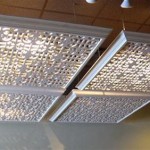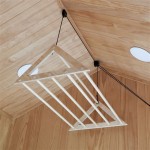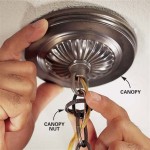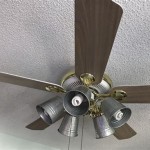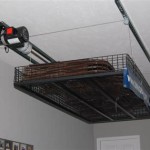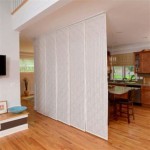How Do I Cover Air Vents In My Ceiling For Winter Time
As the winter season sets in, maintaining a warm and comfortable indoor environment becomes crucial. One effective way to achieve this is by covering air vents in the ceiling. While ceiling vents are essential for proper ventilation throughout the year, they can contribute to heat loss during winter, especially in areas where insulation is inadequate or vents are located in unheated spaces, such as the attic. By covering these vents, you can prevent warm air from escaping and improve the overall energy efficiency of your home.
Covering ceiling air vents for winter is a simple and cost-effective solution that requires minimal effort. However, it's important to follow certain guidelines to ensure proper ventilation and prevent potential issues. Here's a step-by-step guide to help you cover your ceiling air vents for winter:
1. Identify the vents to be covered: Not all ceiling vents need to be covered during winter. Focus on vents located in unheated areas or rooms that are seldom used, such as spare bedrooms or storage spaces. Covering vents in frequently occupied rooms can lead to poor air quality and moisture buildup.
2. Choose suitable vent covers: Vent covers specifically designed for winter use are available in various materials, including foam, plastic, and metal. These covers are designed to block airflow while allowing for some air circulation to prevent condensation. Select covers that fit snugly over the vents to minimize air leakage.
3. Install the vent covers: Most vent covers are easy to install and require no special tools. Simply place the cover over the vent and secure it in place according to the manufacturer's instructions. Magnetic vent covers are a convenient option that can be easily removed when needed.
4. Monitor indoor air quality: While covering ceiling vents can help reduce heat loss, it's important to monitor indoor air quality regularly. Ensure that there is adequate ventilation in occupied rooms to prevent moisture buildup, mold growth, and stale air. If you notice any signs of poor air quality, such as musty odors or condensation on windows, adjust the vent covers or remove them partially to allow for more airflow.
5. Uncover vents in spring: As the winter season ends and temperatures rise, it's essential to uncover ceiling vents to restore proper ventilation and prevent moisture accumulation. Remove the vent covers and store them in a dry place until next winter.
By following these steps, you can effectively cover ceiling air vents during winter to minimize heat loss and improve energy efficiency. Remember to prioritize vents in unheated areas and monitor indoor air quality to ensure a comfortable and healthy living environment.

Should You Cover Roof Vents In The Winter Hvac Com

Changing All My A C Heating Ceiling Vents For Better Airflow Between Naps On The Porch

Should You Cover Roof Vents In Winter

3 Things You Can Do Today To More Evenly Heat Your Home

Adjust Cold Air Return Vents For Fall

Changing All My A C Heating Ceiling Vents For Better Airflow Between Naps On The Porch

How To Open And Close Ceiling Air Vents

Do You Need To Cover Your Attic Vents In The Winter
The Drywall Around My Ceiling Air Vent Is All Broken Up What Can I Fill Space With So A New Cover Be Ed In Quora

Can You Save Money By Closing Hvac Vents In Unused Rooms Energy Vanguard
Related Posts

